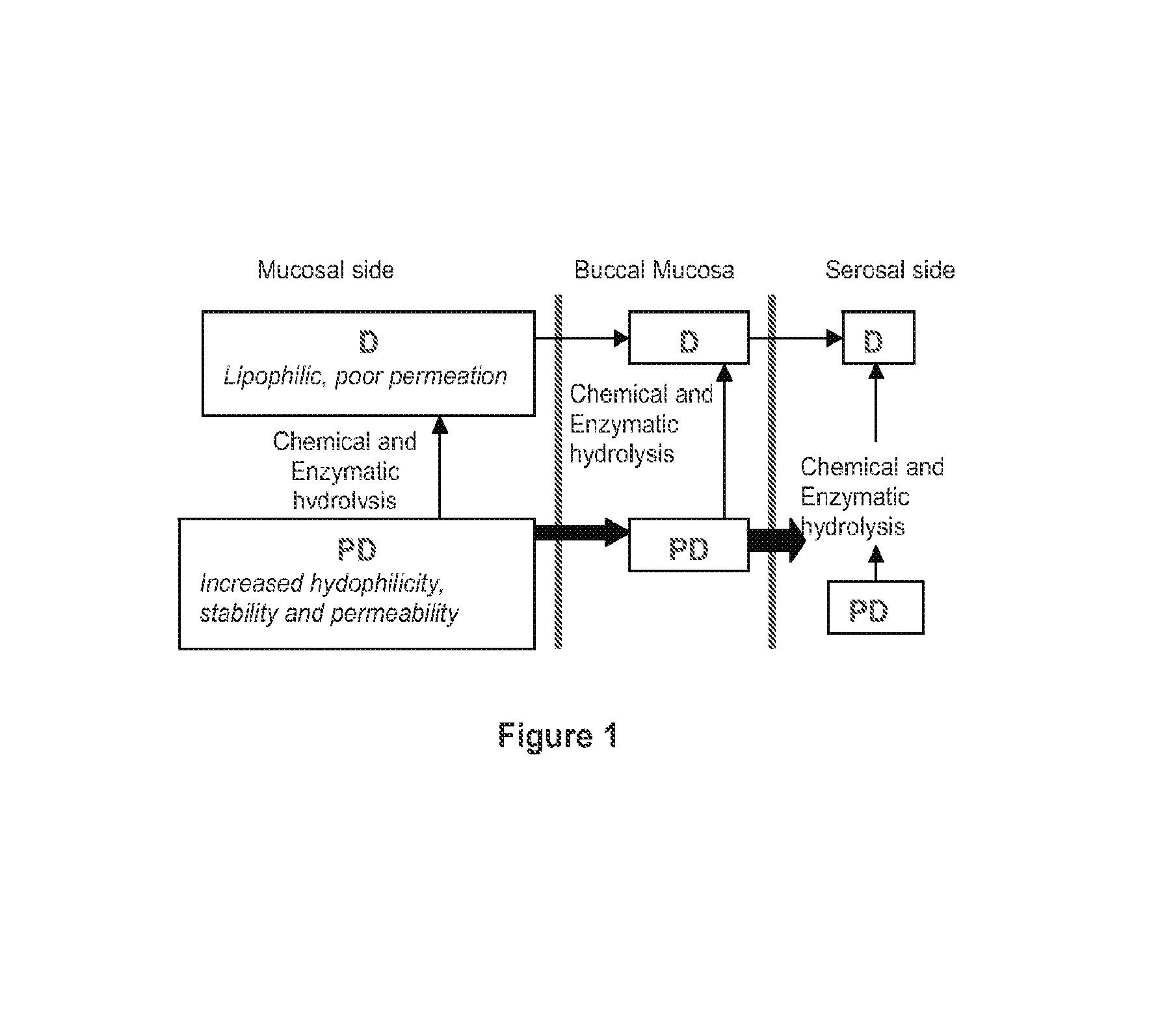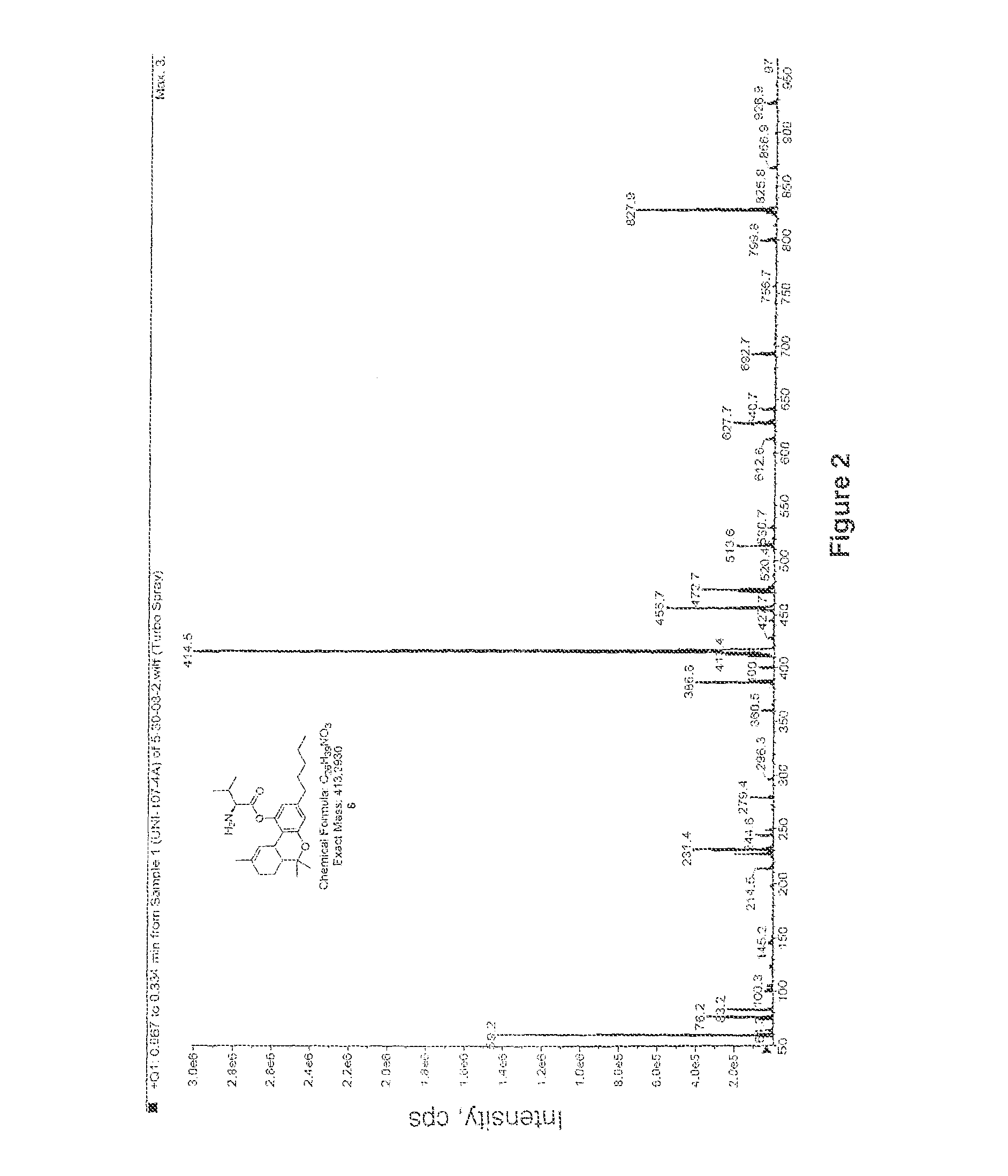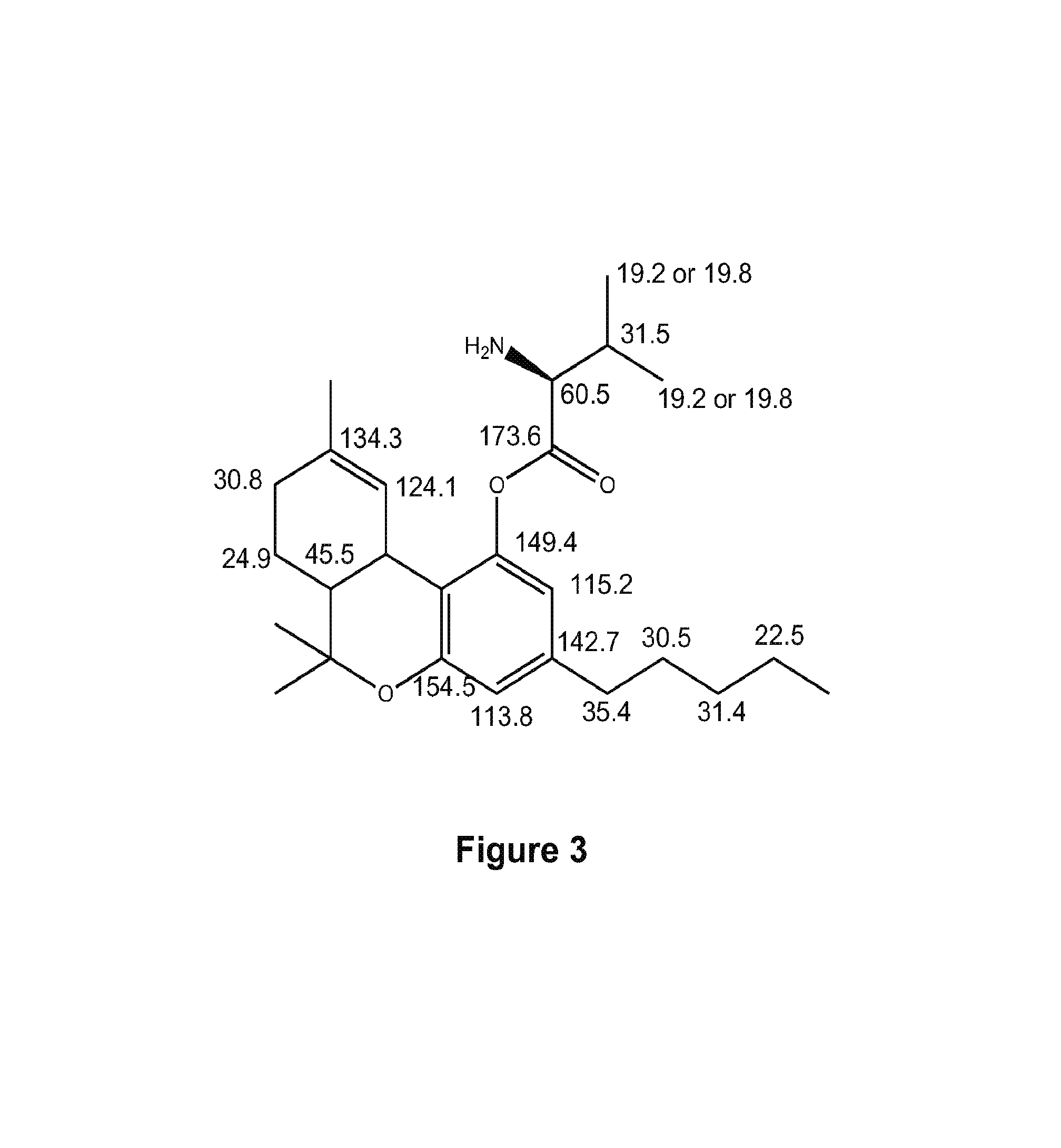Compositions containing delta-9-THC-amino acid esters and process of preparation
a technology of delta-9-thc and esters, which is applied in the field of compositions containing delta-9-thc-amino acid esters and their process of preparation, can solve the problems of inability to self-medicate, inability to use parenteral routes inherently subject to abuse, and the physicochemical characteristics of thc, like many other lipophilic agents, present major challenges to drug delivery scientists, etc., to achieve the effect of improving the formulation characteristics and bioavail
- Summary
- Abstract
- Description
- Claims
- Application Information
AI Technical Summary
Benefits of technology
Problems solved by technology
Method used
Image
Examples
example 1
Preparation of Δ9-THC-valinate (6)
[0049]Following the general procedure outlined in Scheme I, where compound 1 is valine, Δ9-THC-valinate 6 was synthesized to test the validity of the synthetic protocol. Valine (5 g) was dissolved in 34 mL of distilled water and 5.8 gram of sodium carbonate was added in several portions. Allyl chloroformate (10 mL) was added at once after the bubbling stopped. The solution was stirred for 24 hours at 22° C. Concentrated hydrochloric acid was then used to adjust the pH to 1. The solution was extracted with ethyl acetate 8 times and the organic layer was rinsed with brine and dried over sodium sulfate. The solvent was evaporated to dryness to give 6.5 g of the crude product as a colorless syrup.
[0050]A 1.1 equivalent of this product was dissolved in dichloromethane and 1.1 equivalent of DCC was added to it (solution A). Δ9-THC (1 equivalent) was dissolved in dichloromethane along with a catalytic amount of DMAP (dimethyl amino pyridine) which was adde...
example 2
Preparation of Δ9-THC-sarcosinate (7)
[0053]Following the general procedure outlined in Scheme I, where compound 1 is sarcosine, Δ9-THC-sarcosinate 7 was synthesized. Product 7 was purified using column chromatography (>80% yield) and confirmed by mass spectroscopy in the positive ionization mode (M+H=386) (FIG. 5). The structure of product 7 was also confirmed by spectral analysis 1H-NMR and 13C-NMR.
example 3
Preparation of Δ9-THC-leucinate (8)
[0054]Following the general procedure outlined in Scheme I, where compound 1 is leucinine, Δ9-THC-leucinate 8 was synthesized. Product 8 was purified using column chromatography (>81% yield) and confirmed by mass spectroscopy in the positive ionization mode (M+H=428) (FIG. 6). The structure of product 6 was also confirmed by spectral analysis 1H-NMR and 13C-NMR.
PUM
| Property | Measurement | Unit |
|---|---|---|
| log octanol/water partition coefficient | aaaaa | aaaaa |
| volume | aaaaa | aaaaa |
| water soluble | aaaaa | aaaaa |
Abstract
Description
Claims
Application Information
 Login to View More
Login to View More - R&D
- Intellectual Property
- Life Sciences
- Materials
- Tech Scout
- Unparalleled Data Quality
- Higher Quality Content
- 60% Fewer Hallucinations
Browse by: Latest US Patents, China's latest patents, Technical Efficacy Thesaurus, Application Domain, Technology Topic, Popular Technical Reports.
© 2025 PatSnap. All rights reserved.Legal|Privacy policy|Modern Slavery Act Transparency Statement|Sitemap|About US| Contact US: help@patsnap.com



